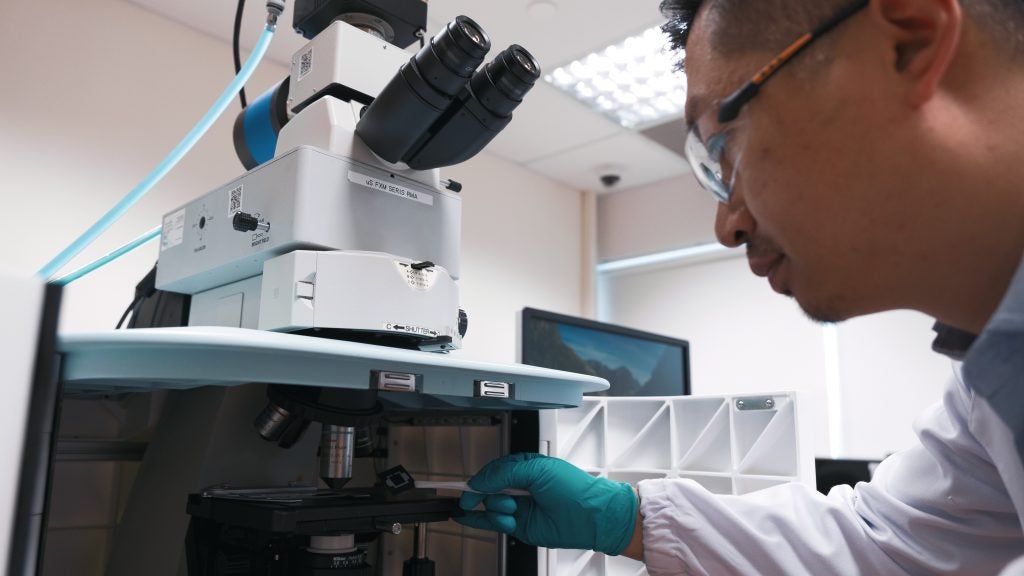
A multidisciplinary team of researchers from NUS and National University Health System (NUHS) has developed a new form of photodynamic breast cancer treatment that promises improved outcomes and reduced side effects compared to current treatments.
The innovative form of tumour-selective light therapy selectively targets breast cancer cells while minimising damage to surrounding tissues. Furthermore, unlike traditional photodynamic therapy, the team’s new approach eliminates the need for external wires to power the treatment.
The research, jointly-led by Professor Zhang Yong (Biomedical Engineering) and Assistant Professor Daniel Teh (Yong Loo Lin School of Medicine) was published in June in the American Chemistry Society journal ACS Nano.

Breast cancer is the most common form of cancer affecting women in Singapore and current treatment usually involves a combination of surgery, radiation therapy, and systemic therapy.
Although radiotherapy has shown positive results, it carries the risk of toxicity to the skin, lungs, heart, and remaining breast tissues. Additionally, the treatment can be time-consuming, requiring daily sessions over several weeks
“The success of our treatment lies in its two key components,” said Professor Zhang of Biomedical Engineering.
“First, breast cancer cells can absorb a light-activated drug called 5-aminovulenic acid (5-ALA), which has been approved by the FDA. Second, when exposed to blue light, this drug selectively destroys the cancer cells without harming surrounding areas.”
To improve the delivery of light to deeper tissues, the researchers developed a biologically compatible silicone breast implant. This implant contains nanoparticles that can convert highly tissue-penetrating near-infrared light into visible light, necessary for activating 5-ALA.

After the surgical removal of the tumor, the implant can be inserted into the tumor cavity, and 5-ALA is administered intravenously. The implant can then be activated by shining light on the surface of the breast.
The team say the silicone implant offers several advantages due to it its moldable nature and soft consistency, making it suitable for partial and total breast reconstruction. Moerover, the implant can remain in place for extended periods, allowing on-demand photodynamic treatment, even if treatment is delayed or in cases of cancer recurrence.
Assistant Professor Teh of the Yong Loo Lin School said: "This discovery has the potential to significantly enhance existing breast cancer therapies. Being able to selectively destroy tumor cells without damaging adjacent tissue is a significant advantage in cancer treatment. While it may not replace current mainstream treatments, it could indirectly reduce chemotherapy and radiation dosages by improving local tumor control."
Dr. Celene Ng, a consultant from the National University Hospital Division of General Surgery (Breast Surgery), said: "This discovery has the potential to change the treatment of breast cancer, improving aesthetic outcomes while ensuring patient safety. The implant allows for better tumor clearance and can act as a 'safety net' against local recurrences."
The addition of photodynamic therapy to the current arsenal of breast cancer treatments holds promise for reducing the disease burden on patients and minimising treatment-related side effects.
When used in conjunction with conventional therapies, photodynamic therapy could be a valuable tool in improving breast cancer outcomes.





